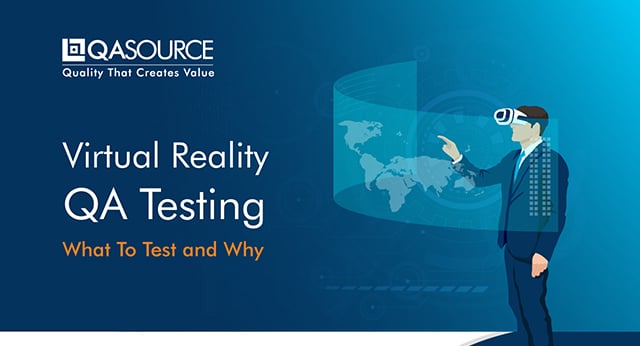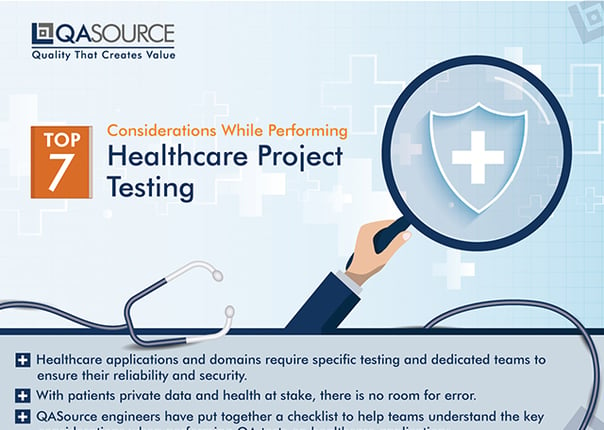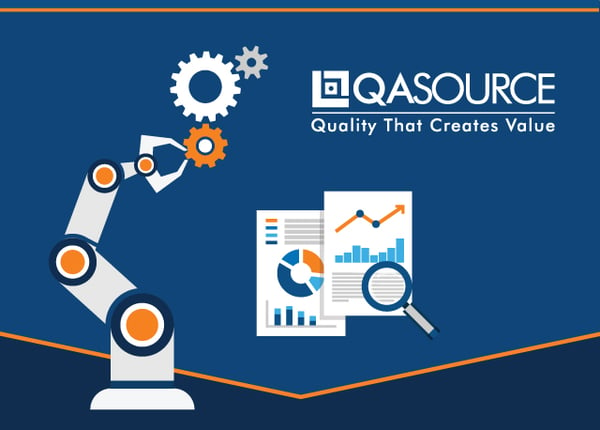A mobile app can only be as strong as its development cycle. And every successful development cycle includes well-defined QA testing procedures that clearly define goals, set deadlines, outline processes and establish metrics to gather. After all, why risk launching without thorough mobile app testing?
QASource Blog
In our blog, we take a deep dive into the latest QA strategies, methodologies, and industry best practices driving the world of quality assurance. Follow our blog to get new ideas as to how to effectively deliver high-quality, bug-free software products, websites, and applications, while keeping costs low.

Timothy Joseph

Recent Posts
QASource's testing engineers share their tried and tested approach for testing augmented reality and virtual reality applications. This infographic will walk you through the test strategies ideal for VR/AR testing.
Every QA endeavor needs a plan in place. That’s because QA testing succeeds when there are set goals, established timelines, systematic processes and concrete metrics. So why settle for less when performance testing your software application? After all, being fully prepared with a well-defined test plan can prevent delays, enhance test results and streamline your development cycle.
What you don’t know about your software product or your company’s infrastructure should scare you. Every minute that you turn a blind eye to an issue is a minute gained by cybercriminals intent on gaining access to your sensitive data and confidential information. And with more employees working from home, hackers have discovered more ways to infiltrate software and applications.
Developing a well functioning and compliant healthcare application comes with a unique set of challenges. Meeting security standards and properly integrating third party software solutions are just two of the hurdles development and QA teams can expect to encounter. QASource’s experts have created this checklist to help teams navigate the complexities of healthcare app QA testing.
Don’t let your application security fall flat. In this version of the expert series, let’s discuss the important application security trends in 2020 so that you are prepared for security threats that may come your way.
HR is no longer an old-school practice. HR teams across industries are adopting technology solutions in order to streamline internal practices, recruit talent, retain employees and reduce costs. And when companies choose to implement this year’s HR tech trends, they are receiving the most value from their investment.
QA Metrics have proven to be profoundly beneficial for QA and development teams. They help teams quantify their performance, progress, and quality of work. Our team of expert engineers have designed a checklist of metrics that will help you create an efficient and comprehensive QA process. These fundamentals QA metrics will give an insight into your process and how you should track them.
Welcome to a new era in software testing. As companies compete to offer the best software products in the market, they must also adopt the latest trends in software testing. And as technology advances at lightning speed, any hesitation about staying up to date with your QA practices can lead to quickly falling behind your rivals.
Written by QA Experts
QASource Blog, for executives and engineers, shares QA strategies, methodologies, and new ideas to inform and help effectively deliver quality products, websites and applications.
Categories
Authors
Our bloggers are the test management experts at QASource. They are executives, QA managers, team leads, and testing practitioners. Their combined experience exceeds 100 years and they know how to optimize QA efforts in a variety of industries, domains, tools, and technologies.








